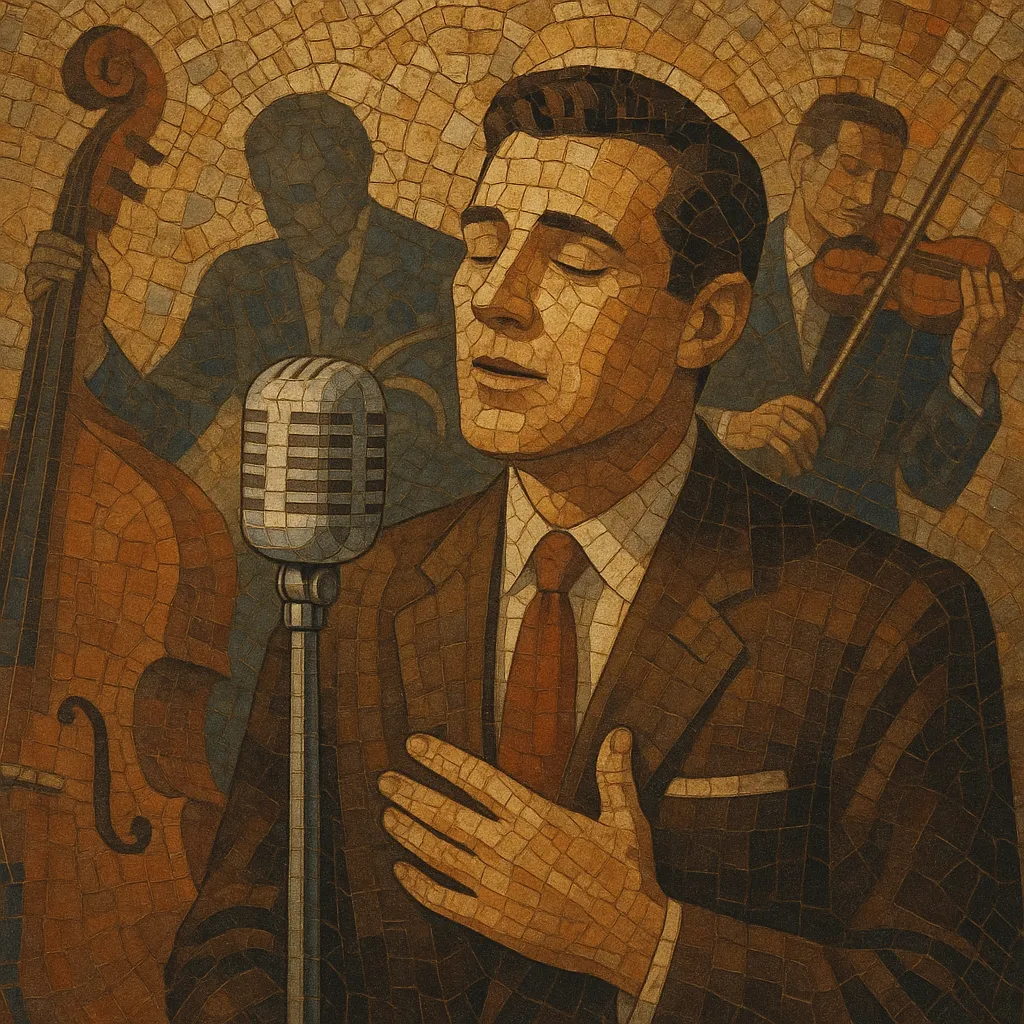
Adult standards is a song-based popular style and later radio format centered on the Great American Songbook and pre-rock era pop. It emphasizes sophisticated vocal performances, memorable melodies, and lush arrangements drawn from Broadway, Hollywood musicals, big bands, and jazz-influenced traditional pop.
Typical recordings feature rich orchestration (strings, woodwinds, and brass), a polished rhythm section, and crooner-style vocals delivered with close-mic intimacy. Harmonies often include jazz chords, secondary dominants, and modulations, supporting elegant, urbane lyrics that focus on love, longing, and everyday romance.
Although it predates rock ’n’ roll in repertoire, adult standards also encompasses later revivals and reinterpretations by contemporary singers who keep the classic songbook alive through modern recordings and live performances.
Adult standards traces its repertoire to the professional songwriters of Tin Pan Alley and to Broadway and Hollywood. In the 1920s–1930s, composers like George Gershwin, Cole Porter, Irving Berlin, and Jerome Kern produced sophisticated, melody-rich songs that became the backbone of the Great American Songbook. Dance orchestras and big bands popularized these tunes, while microphone technology enabled intimate “crooner” vocals.
As big band leaders and star vocalists emerged, singers such as Bing Crosby, Frank Sinatra, Ella Fitzgerald, Nat King Cole, and Peggy Lee shaped the sound associated with adult standards. Orchestral accompaniments, swing-influenced rhythms, and jazz harmonies defined the era, while Broadway and film continued to supply new standards. These recordings cemented the classic interpretation style—smooth phrasing, dynamic nuance, and lyric-forward storytelling.
When rock ’n’ roll shifted mainstream pop in the late 1950s–1960s, the classic repertoire found a lasting home in middle-of-the-road (MOR) and easy listening programming. The term “adult standards” coalesced later as a radio format focused on pre-rock standards, crooners, and timeless pop vocals. Legacy artists continued recording, and newer interpreters—often jazz-leaning vocalists—kept the canon in circulation.
Periodic revivals (swing revival, lounge/cocktail culture, and tribute albums) bring standards to new audiences. Contemporary artists and jazz singers continually reinterpret the repertoire with modern fidelity and arrangements, while orchestras and big bands keep the performance practice alive on stage. Streaming-era playlists and specialty stations preserve the format’s emphasis on elegance, melody, and classic songwriting craft.

